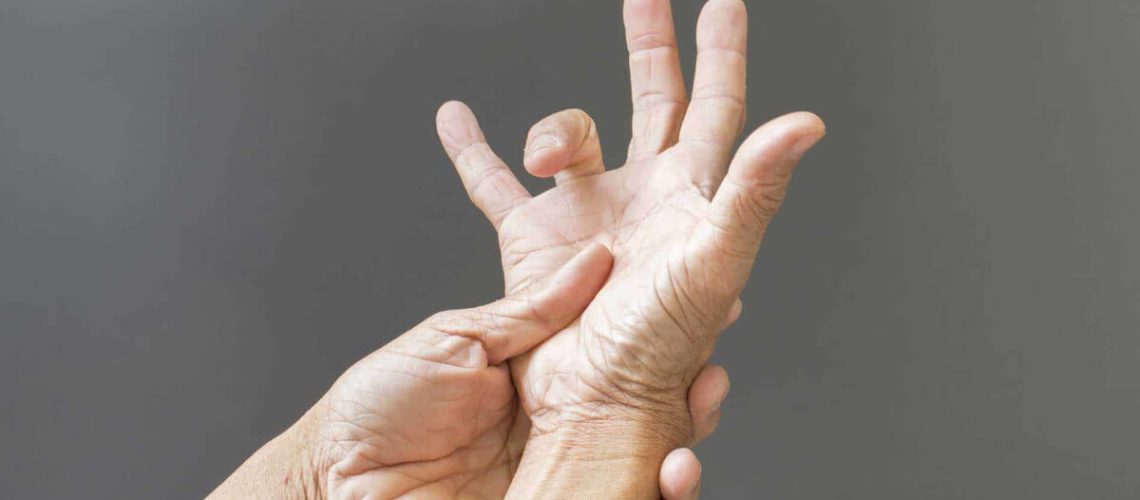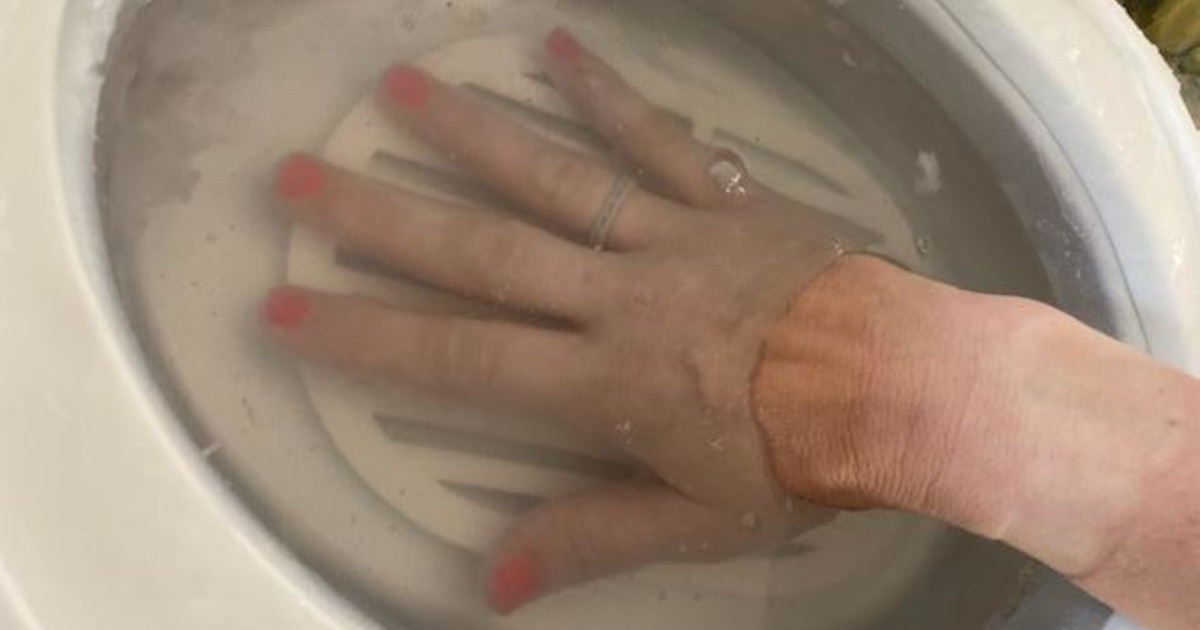

Taméra Ford, OTR/L
Causes & Treatment of Trigger Finger
What is Trigger Finger?
Trigger finger is a common condition that causes pain and limited mobility in the fingers. Have you ever woken up with your finger stuck in a bent position? This phenomenon is known as trigger finger.
Interactions between thickened tendon sheaths and inflamed flexor tendons cause a clash within the finger joint. Learning about these intricacies helps us to make sense of how trigger finger disrupts the natural functionality of our hands.
Daily activities like gripping objects and buttoning clothes can become hard. It is more common in those with conditions like diabetes and rheumatoid arthritis. Treatment can include rest, ice to reduce swelling, wearing a splint, and physical therapy exercises. If these don’t help, surgery might be needed. It releases the constricted tendon sheath and is usually done on an outpatient basis.
Don’t ignore the symptoms of trigger finger. Early intervention can help prevent complications.
Causes of Trigger Finger
Trigger finger, or stenosing tenosynovitis, is a condition where the finger or thumb becomes stuck in a bent position and then suddenly straightens out like a trigger being pulled. It is caused by inflammation or thickening of the tendon sheath, which restricts the movement of the tendon.
The main causes of trigger finger include repetitive finger movements, gripping activities, and certain medical conditions such as rheumatoid arthritis and diabetes. These factors can lead to the development of nodules or swelling in the tendon sheath, resulting in the characteristic triggering or locking sensation.
Furthermore, avoiding activities that aggravate the condition and applying ice or heat to the affected area can help reduce inflammation and alleviate symptoms. Physical therapy exercises, splints, and anti-inflammatory medications may also be recommended. In severe cases, corticosteroid injections or even surgery may be necessary to release the tendon and restore normal finger movement. Regular hand exercises and ergonomic modifications can help prevent trigger finger from recurring.
Pro Tip: If you experience symptoms of trigger finger, consult a healthcare professional for an accurate diagnosis and appropriate treatment. Early intervention can lead to better outcomes and prevent long-term complications.
Rheumatoid Arthritis
Rheumatoid Arthritis can cause joint inflammation, plus other symptoms. These may include fatigue, fever, weight loss, and feeling unwell. It is not caused by wear and tear like osteoarthritis. Rather, it’s a combo of genetics and the environment.
Women are three times more likely to get it, says the Centers for Disease Control and Prevention.
Repetitive Hand Movements
Repetitive hand movements can cause trigger finger. It is marked by stiffness and clicking/locking sensations. Here are some key points:
- Repetitive hand motions strain the tendons in your fingers.
- These motions can be typing, knitting, or playing instruments.
- Constant repetition leads to inflamed and thickened tendon sheaths, which makes it hard for fingers to move.
Symptoms of Trigger Finger
Trigger finger can cause pain, stiffness, and difficulty in flexing or extending your fingers. It happens when the tendons in the finger become inflamed or irritated, creating nodules that get stuck in the tendon sheath.
Signs of trigger finger include:
- A clicking or popping sensation when moving the finger.
- Pain or discomfort at the base of the finger or thumb.
- The finger getting locked in a bent position and suddenly snapping straight.
- A visible bump or nodule at the base of the affected finger.
- Difficulty grasping objects or doing tasks that require fine motor skills.
Without treatment, trigger finger can get worse and make it harder to move the affected finger. However, with proper treatment and care, symptoms can be managed. If you notice any of these symptoms, it’s important to get medical help.
Diagnosis of Trigger Finger
The process of diagnosing trigger finger involves several steps. Firstly, a thorough physical examination of the affected finger is conducted to assess the range of motion, presence of swelling or tenderness, and the snapping or clicking sensation. The doctor may also inquire about the patient’s medical history and any relevant activities or traumatic events.
Additionally, imaging tests like X-rays or ultrasounds may be performed to rule out other conditions and confirm the diagnosis of trigger finger. If necessary, the doctor may refer the patient to Restored Hope Hand Therapy for further evaluation or treatment options. Remember, early diagnosis is crucial for timely intervention and improved outcomes.
Physical Examination
Diagnosing trigger finger requires a physical examination. The healthcare professional assesses the hand and looks for signs and symptoms.
Physical Exam | Description |
Palpation | Doctor applies pressure to check for tenderness and swelling. |
Range of Motion | Evaluate range and any pain during movement. |
Finger Snap Test | Flex and extend your finger to feel any snapping. |
Nodule Presence | Doctor feels for bumps on the tendon sheath. |
Clicking Sensation | Moving the finger may cause clicking, indicating a restriction. |
Imaging Tests
Imaging tests are essential for correctly diagnosing trigger finger and ruling out other possibilities. They give detailed pictures of the afflicted finger, helping medical professionals spot any irregularities or verify the presence of inflammation or nodules.
Specific types of tests include:
Imaging Test | Description |
X-ray | X-rays can show bone abnormalities or dislocations |
Ultrasound | Ultrasound imaging employs sound waves to visualize soft tissues |
MRI | Magnetic Resonance Imaging offers detailed images of structures |
Apart from these commonly used imaging tests, other distinctive methods may also be used based on the seriousness and complexity of the condition. These include thermography, which assesses changes in skin temperature, and dynamic ultrasound, which evaluates finger movements during flexion and extension.
Treatment Options for Trigger Finger
Treatment options include:
- Splinting: Wearing a splint or brace can provide support for the affected finger, reducing symptoms and promoting healing.
- Medications: Nonsteroidal anti-inflammatory drugs (NSAIDs) may help relieve pain and inflammation associated with trigger finger.
- Corticosteroid Injections: Injecting corticosteroids into the affected area can reduce inflammation and alleviate symptoms.
- Physical Therapy: Exercises and therapies aimed at improving finger mobility and reducing inflammation may be recommended.
- Alternative Therapies: Some individuals may find relief from trigger finger symptoms through acupuncture or massage.
- Surgery: In severe cases where other treatments have failed, surgery may be necessary to release the affected tendon and restore finger movement.
It is important to consult with a healthcare professional for a proper diagnosis and to determine the most appropriate treatment option for trigger finger. Each treatment works differently based on the underlying cause and severity of the condition. Additionally, practicing good hand hygiene and avoiding repetitive finger movements can help prevent trigger finger from worsening.
Non-Surgical Treatments
Non-surgical treatments for trigger finger can be effective. Resting the finger can reduce inflammation and promote healing. Braces/splints support the finger and reduce movement, which can help with pain. Physical therapy exercises can improve range of motion, strengthen muscles, and improve flexibility. Steroid injections provide relief by reducing inflammation and controlling pain. Medications like NSAIDs also help control pain and reduce swelling.
Alternatives such as wearing gloves or using heat/cold therapy may further reduce discomfort. A study by Xie et al. found that steroid injections showed significant improvement in symptom relief for those with trigger finger.
Rest and Immobilization
Rest and immobilization are good first steps to treat trigger finger. Resting helps reduce inflammation and relieve pain. Splinting or taping the finger in place can keep it stable and aid healing. Avoid activities that could irritate the finger and do gentle motion exercises to stay flexible. How long one rests their finger can vary based on severity and response to treatment, so check-ins with a doctor are necessary. Severe cases may need more than rest and immobilization, like medicine or injections. Lastly, Mayo Clinic says this occurs more in women than men. Medication can be a solution, but be aware of possible side effects.
Medications
Medications are vital for treating trigger finger. They can lessen inflammation and handle the pain it causes. Here’s a list of popular medicines for trigger finger:
- Nonsteroidal Anti-Inflammatory Drugs (NSAIDs): Reduce pain and inflammation.
- Corticosteroids: Lowers swelling and inflammation.
- Topical creams: Gives local pain relief.
Moreover, your doctor may also advise physical therapy or splinting to help improve the symptoms of trigger finger.
It’s crucial to consult with a health professional before using any medicines for trigger finger or any other medical condition. They can give you personalized advice based on your case.
Splinting
Splinting is a great treatment for trigger finger. It immobilizes the affected finger, helping to reduce pain and inflammation. This non-invasive approach can promote healing. Plus, studies show it works 94% of the time!
Physical Therapy
Physical therapy is an essential treatment for trigger finger. Exercises, techniques, and non-invasive approaches can help reduce pain, improve movement, and strengthen the finger.
- Range of motion exercises to loosen the tendon sheath and enable smoother movement.
- Strengthening exercises with resistance bands or hand grippers.
- Manual therapy with gentle manipulation and soft tissue mobilization.
- Ergonomic advice to prevent further strain on the hands and fingers.
Heat or ice therapy may also be used to reduce inflammation and promote healing. Each patient’s treatment plan may vary, that’s why consulting a qualified hand therapist at Restored Hope Hand Therapy is recommended.
Surgical Options
Surgical choices for trigger finger include procedures to reduce the condition. One is called percutaneous release – a small cut to free up the restrained tendon. Open release surgery is another – a larger cut to access and release the affected tendon.
In some cases, arthroscopic release is considered. An arthroscope helps in releasing the restricted tendon with tiny incisions.
Steroid Injections
Steroid injections are a popular way to tackle trigger finger. They involve injecting corticosteroids, powerful anti-inflammatories, into the tendon sheath of the affected digit. They work by reducing swelling and inflammation, allowing the tendon to move easily. This type of injection is usually done in the doctor’s office and doesn’t require anesthesia.
It may take multiple injections with several weeks between each one to get the desired effect. Steroid injections have proven to be effective in many cases. However, they may not be a long-term solution. Surgery could be necessary if the injections don’t provide sufficient relief.
Percutaneous Release Surgery
Percutaneous Release Surgery involves using a needle-like instrument to cut the tight ligament. The goal? To make symptoms go away and restore normal movement.
This surgery is usually done on an outpatient basis. This means patients can usually go home the same day. This minimally invasive approach offers smaller incisions, shorter recovery time, and reduced chance of complications.
Open Surgery
Open Surgery is a treatment for trigger finger that requires a minor surgical procedure. A small incision is made in the palm or finger to access the affected tendon sheath. The purpose? To free the constricted tendon sheath, restoring normal movement and easing pain. Local anesthesia is usually used, numbing only the area being worked on. Most patients can return to light activities within a few days, and full activities in two weeks.
Recovery and Rehabilitation
If you want to avoid a trigger finger situation, here are some tips:
- Wear a splint or brace
- Do finger-strengthening exercises and range-of-motion exercises
- Take nonsteroidal anti-inflammatory drugs (NSAIDs) if needed
Prevention Tips for Trigger Finger
Maintain proper hand grip and take regular breaks when doing activities with finger movements. Exercise your hand and finger muscles, like squeezing a stress ball or using resistance bands. Use tools or aids that require less effort to avoid prolonged gripping or grasping of objects. Listen to your body and take immediate action if you experience any pain in your fingers. Seek medical advice if necessary.
Also, be mindful of other factors that can contribute to trigger finger, such as underlying health conditions or repetitive trauma to the fingers.
To prevent trigger finger, keep your hands moisturized and avoid exposing them to extreme temperatures. Be cautious when participating in activities that put strain on your fingers.
Implement these tips to reduce the likelihood of developing trigger finger and keep your fingers in optimal condition. Prevention is key to preserving hand dexterity and functionality.
If you have persistent pain or discomfort due to trigger finger, schedule an appointment to see a hand therapist at Restored Hope Hand Therapy today!




